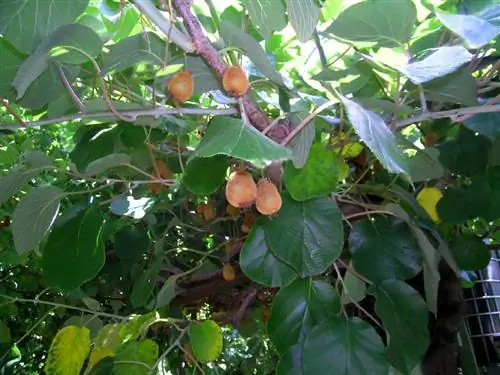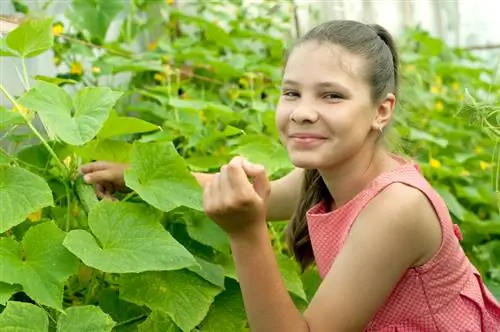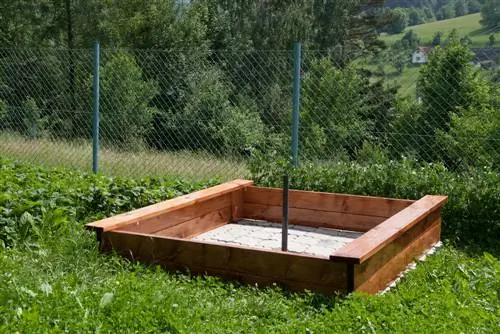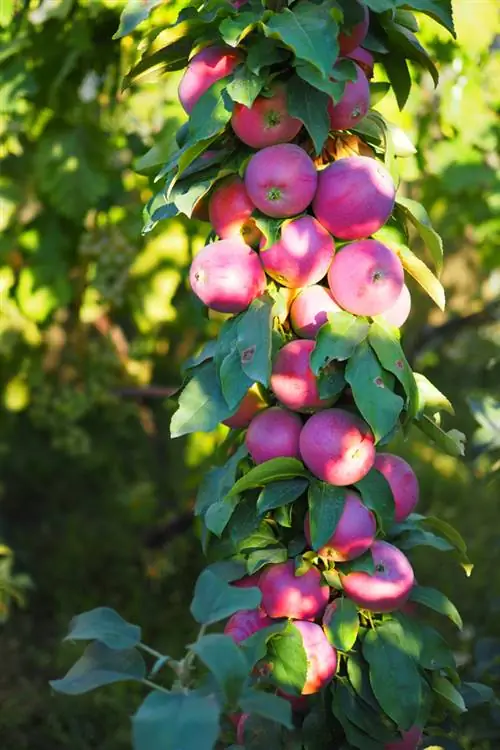- Author admin [email protected].
- Public 2023-12-16 16:46.
- Last modified 2025-01-23 11:20.
Cultivating exotic kiwis in your own garden has become possible in our climate thanks to the robust and hardy varieties. The hardy climbing shrub from Asia does not require any extensive care and still delivers consistently good yields.
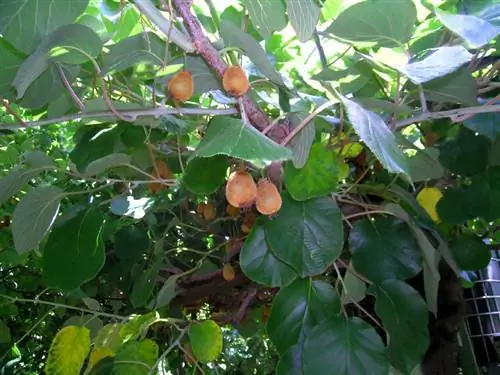
How to grow kiwis in your own garden?
To successfully plant kiwis in your own garden, choose winter-hardy varieties, such as Heyward or Bavarian kiwi, and plant them in humus-rich, slightly acidic soil with sufficient water and a climbing aid. Also provide a male pollinator near the female plants.
The climbing shrub, native to China, feels at home in subtropical regions. The fruits for the German market are delivered all year round from New Zealand, Chile, Italy or Greece. But the exotic climbing fruit is now also successfully cultivated in our latitudes.
Choice of variety appropriate to location
When selecting the plant, the regional climate should be taken into account first and foremost. The large-fruited kiwi varieties are quite suitable for cultivation in areas with mild winters. The standard variety Heyward, the Starella or Atlas varieties are frost-resistant down to around -15°C. The mini kiwis can tolerate sub-zero temperatures of up to 30° C and can therefore also be planted in areas with colder climates. The best known of these robust, smooth-skinned, small-fruited varieties is the so-called Bavarian kiwi (also called Weiki).
Caring for outdoor plants
The kiwis are planted in early summer or autumn in a sheltered, windless location. In the first year, good winter protection (€12.00 at Amazon) in the root area is recommended, and if necessary, overwintering as a pot plant in a frost-free room. Other essentials:
- humus-containing, slightly acidic soil,
- high water requirement in summer,
- economical fertilization from the 2nd year onwards,
- a climbing aid.
The kiwis are dioecious, i.e. H. The female plants only bear fruit if a male plant that is suitable as a pollinator grows in the immediate vicinity. One male bush can fertilize about six to nine female bushes. The planting distance should be approx. 1-4 meters. The self-pollinating kiwi varieties also produce better yields when several plants grow next to each other.
Tips & Tricks
If you want to grow your kiwi plants yourself from seeds or cuttings, you have to be patient. Ten years can pass before the first flowering or harvest.

